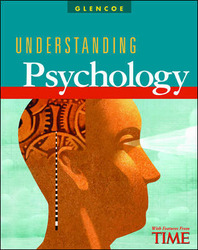
Understanding PsychologyChapter 12: Motivation and EmotionChapter OverviewsChapter 12 explains how motivation and emotion influence behavior. Motivation addresses the physical and mental factors that cause people to act in a certain way while emotion involves our subjective feelings, physical arousal, and external expressions in response to situations and events. Section 1 summarizes four theories that psychologists use to explain motivation. The instinct theory states that people are motivated by instincts, while the drive-reduction theory proposes that people be moved to action by physiological needs. According to the incentive theory, motivation is greatly influenced by the environment. Lastly, the cognitive theory states that behavior is motivated by extrinsic and intrinsic forces. Section 2 defines biological and social needs and discusses how much of life is spent trying to satisfy those needs. This section includes the biological motives for behavior, defines homeostasis, and explains the roles of the hypothalamus and psychosocial factors in hunger. Social motives include the need for achievement, fear of failure, and fear of success. Abraham Maslow's hierarchy of needs proposes that first-level (fundamental) needs must be satisfied before moving on to second-level (psychological) needs and third-level (self-actualization) needs. Section 3defines emotions and explains that all emotions have three aspects —physical, cognitive, and behavioral parts. Theories of emotion propose that emotions result from physical changes or mental processes, or an interaction of physical and mental processes. |  |















